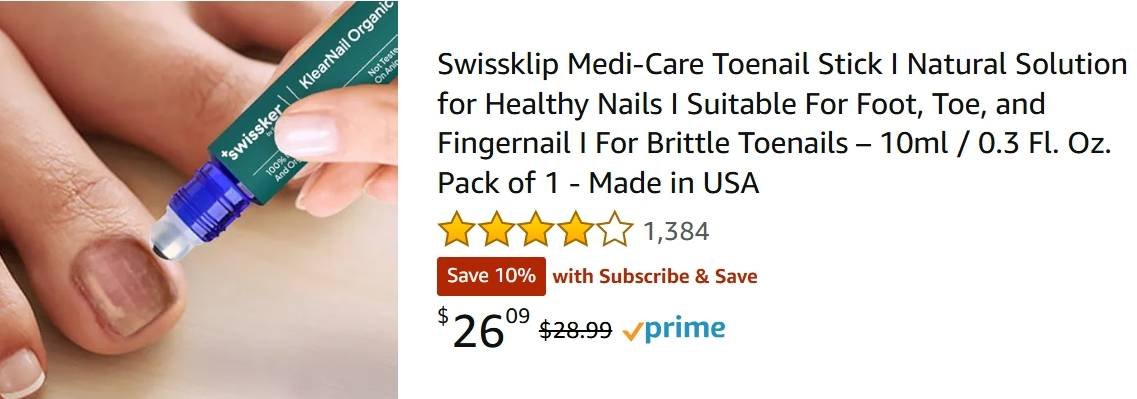Ingrown Toenail Myths You Need to Stop Believing
Find a Podiatrist Near You
Get same-day appointments with verified podiatrists. Insurance accepted.
Ingrown toenails are a common foot problem, but misinformation often makes the condition worse. Many people rely on myths that can lead to unnecessary pain, ineffective treatments, and even infections. Understanding the truth about ingrown toenails can help you manage and prevent them properly.

Myth #1: Only People with Poor Hygiene Get Ingrown Toenails
Reality: Ingrown toenails can happen to anyone, regardless of how clean their feet are. While good hygiene helps prevent infections, it does not stop nails from growing improperly. Factors like genetics, tight shoes, trauma, and improper nail trimming play a bigger role.
Myth #2: Cutting a Notch in the Nail Will Prevent It from Growing Inward
Reality: Many believe that cutting a V-shaped notch in the center of the nail forces the edges to grow toward the middle. This is not true. Nails grow from the base, not the tip, so notching does nothing to change their natural growth pattern. In fact, it may weaken the nail and make it more prone to breaking.
Myth #3: You Should Dig Out the Ingrown Nail Yourself
Reality: Trying to remove the ingrown portion of your nail at home can lead to more pain and a higher risk of infection. Using unsterilized tools or cutting too deeply can worsen the problem. If the nail is embedded in the skin, it’s best to seek professional treatment.
Myth #4: Ingrown Toenails Will Fix Themselves Over Time
Reality: An ingrown toenail rarely corrects itself without intervention. Mild cases may improve with proper nail trimming, soaking, and protective measures. However, if the nail continues to grow into the skin, professional treatment may be needed to prevent infection or further complications.
Myth #5: Tight Shoes Are the Only Cause of Ingrown Toenails
Reality: While wearing tight shoes is a common cause, it’s not the only reason toenails grow inward. Improper nail trimming, genetic factors, toe injuries, and fungal infections can also contribute. Even people who wear properly fitted shoes can develop ingrown toenails.
Myth #6: You Can Cure an Ingrown Toenail with Home Remedies Alone
Reality: Warm foot soaks, antiseptics, and antibiotic ointments can relieve symptoms and prevent infection, but they won’t correct a deeply ingrown nail. If the nail is embedded in the skin or causing severe pain, a podiatrist may need to trim or remove the affected portion.
Myth #7: Cutting Nails in a Curve Prevents Ingrown Toenails
Reality: Rounding the edges of toenails actually increases the risk of them growing into the skin. The best way to trim nails is straight across with a slight filing to remove sharp edges.
Myth #8: Only Surgery Can Fix an Ingrown Toenail
Reality: Surgery is only necessary for severe or recurring cases. Many ingrown toenails can be managed with conservative treatments like proper nail trimming, wearing roomy shoes, and using cotton or dental floss to gently lift the nail. However, if the issue keeps coming back, a podiatrist may recommend partial nail removal or permanent treatment.
In the YouTube video above “Common Myths About Ingrown Nails”, the host debunks popular yet misleading beliefs—like the idea of cutting a “V” into an ingrown toenail or always slicing nails straight across—as surefire methods to stop ingrown nails. The video highlights safer, evidence-based approaches and when it’s best to see a medical professional for advice.
When to See a Doctor
If your ingrown toenail is causing significant pain, showing signs of infection (such as redness, pus, or swelling), or keeps recurring, seek medical help. A podiatrist can provide safe and effective treatment to prevent further complications.
Final Thoughts
Believing in myths about ingrown toenails can lead to poor foot care and unnecessary pain. The best way to prevent and treat them is by following proper nail-trimming techniques, wearing well-fitted shoes, and seeking medical help when needed. Understanding the facts will help you maintain healthier feet and avoid complications.
Ready to See a Podiatrist?
Connect with top-rated podiatrists in your area. Book appointments instantly with verified doctors who accept your insurance.
Same-Day Appointments
Get seen today with urgent care availability
Verified Reviews
Real patient reviews and ratings
Insurance Accepted
Most major insurance plans covered
